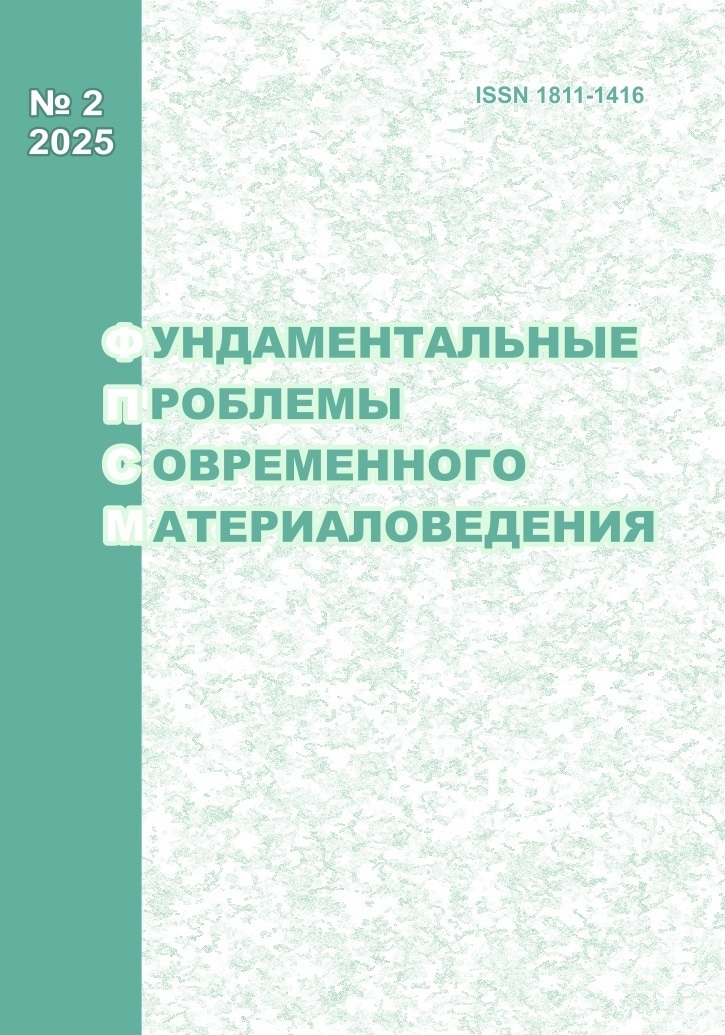BEHAVIOR OF Fe95Ni05 ALLOY WITH GRADIENT GRAINED STRUCTURE AND DIFFERENT PHASE COMPOSITION DURING NANOINDENTATION
10.25712/ASTU.1811-1416.2025.02.004
Keywords:
molecular dynamics, gradient grained structure, nanoindentation, plastic deformation, phase transitionsAbstract
A molecular dynamics study of the effect of phase composition on the physical-mechanical properties and structural rearrangements of the gradient grained Fe95Ni05 alloy during nanoindentation was carried out. The grain size in the simulated samples increased from 10 to 30 nm from the loaded surface in the indentation direction. In different samples, the volume fraction of the BCC phase in the lamellae of each grain with the FCC lattice was 0, 30 or 60%. It was found that an increase in the volume fraction of the BCC phase in FCC grains reduces the hardness of the alloy and increases its ductility. The onset of plastic deformation during indentation of samples was associated with the generation of dislocations in the contact zone of the indenter with the sample, followed by the formation of stacking faults and twins. The processes of plastic deformation develop most actively along grain boundaries and interphase boundaries. As the indentation depth increases, the BCC-FCC phase transitions in lamellae of grains located in the indenter impact region begin to make a significant contribution to plasticity. It was found that interphase and grain boundaries localize the development of plasticity during nanoindentation, preventing the propagation of structural defects into deeper grain layers. An increase in the volume fraction of the BCC phase enhances the localization of plastic deformation in the loaded material.











 Journal «Fundamental’nye problemy sovremennogo materialovedenia / Basic Problems of Material Science»
Journal «Fundamental’nye problemy sovremennogo materialovedenia / Basic Problems of Material Science» This work is licensed under a
This work is licensed under a 
